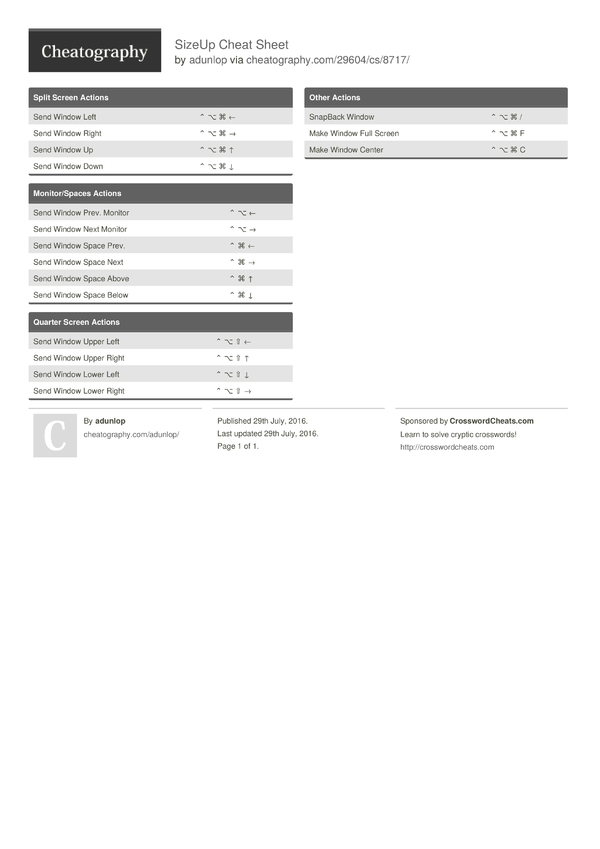
You can then add smoke and flames to the photos to show many different scenarios.
#Sizeup free software#
There are several simple simulation software programs that allow you to work with pictures you take from your own district. Remember, the goal is to have members who can give a good report and begin to formulate an action plan as they arrive on scene.Īs they are getting comfortable, it is time to create a more real-world environment. (Of course you will be utilizing a tactical or talk-around channel to not disrupt normal operations of the district.) Additionally, crews can use a small white board to write out their on-scene report to hit all the marks.
#Sizeup free portable#
In training, have crews start by practicing their on-scene reports over a portable radio to give that true feel of actually keying up the radio and transmitting a message to dispatch. Practice makes it easy: Training on size-up reportsĪrriving on scene and establishing command should always priority – and this must be practiced in training. In both examples, the first unit on scene takes command of the incident, completes a quick size-up or begins an investigation of the scene and provides direction. Have all responding units slow their response and stage at Smith and 2 nd Avenue. We have nothing showing and will be out investigating. Show Engine 7 as Smith Street command.”Īn example of an initial on-scene report for nothing showing: “Engine 2 is on scene at 1234 Smith Street.


Engine 7 will be laying a supply line and going in with a handline for search and rescue. We have a one-story residential structure with light smoke showing from the A/D corner. The ultimate goal: Your crews develop a pattern of radio traffic that will become automatic.Īn example of an initial on-scene report for a working fire: “Engine 7 is on the scene at 1234 Smith Street. Let’s start with the basic on-scene report, as it sets the stage for the entire management of the event. Taking control and providing a detailed size-up If you wait long enough, units will arrive on scene and begin to self-deploy, performing what they believe should happen, and trust me, this will take place no matter what the situation, as I’ve witness it many times. I know most of you have likely used the radio to call on scene at some point in your career, and it probably sounded something like this: “Engine 2 is on scene at 1234 Smith Street, Engine 2 will be command.” Then … nothing.īut what if it was just a smoke alarm activation with nothing showing? Additional apparatus are still rolling down the road to your location, with lights and siren blazing, not knowing that you are talking to the homeowner about the smoke alarm that has been going off for the last hour. The problem with failing to provide detailed information Of course, all this should be trained upon. She can make a 360 and gather further information to pass along, identify hydrant location, communicate safety hazards to other members. What a waste of valuable time for her to stand in the yard waiting for other units to arrive on-scene. She should be prepared/trained to give an initial on-scene report if there is a fire or any type of event at 2am. The “first unit”, in a volunteer department could be a young female firefighter that lives just down the street. Before you throw your hands up and say, “We don’t have time for this!” remain calm and train on it. Command can easily be transferred once a ranking officer arrives.)Įven though the task-level actions still must be completed, it is essential for someone to develop an overall plan to coordinate every task to ensure that the plan comes together. They can let the responding units know what is happening at that moment and begin to gather information, such as if everyone is out of the house and accounted for. ( Note: This does mean the first individual, no matter what rank, should assume command and give the initial on-scene report if they arrive first. The very first unit on the scene should assume that role and deliver a brief initial on-scene report as well as provide a plan of action to other incoming units. In other words, someone must be in charge. One department member to step away from the task-level duties and step up to the tactical/mid-level management so there is a vision for scene management. However, there first must be some form leadership to provide an overall direction for the event – and this comes from the incident commander (IC).

Firefighters and company officers too often gravitate to operating at the task level – that operational level that includes operating a nozzle on a hoseline, laddering a building on a structure fire, operating an extrication tool at a motor vehicle crash, and related duties.Īll of these actions are very important in the mitigation of the incident.


 0 kommentar(er)
0 kommentar(er)
